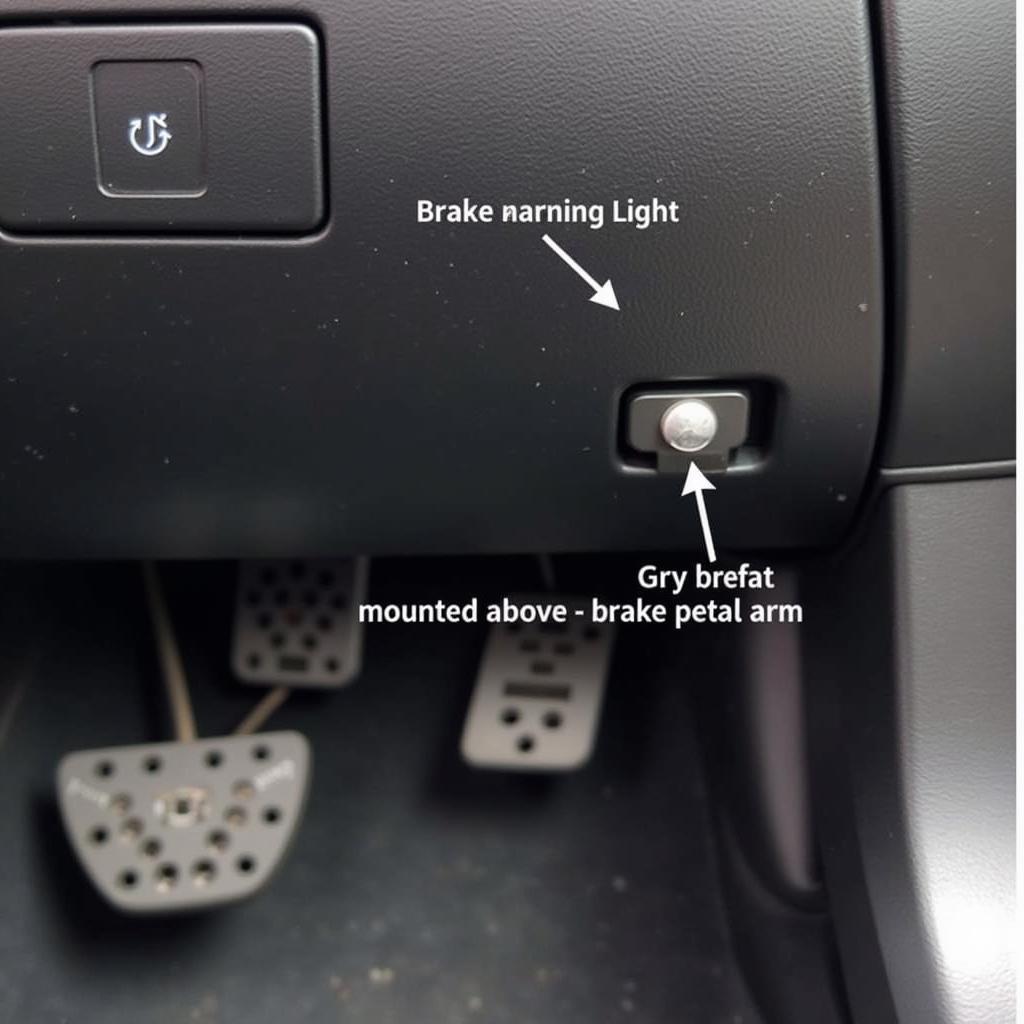The brake warning light on your Mustang’s dashboard is a crucial safety feature, alerting you to potential issues within your braking system. If you’re seeing it illuminated, it’s essential not to ignore it. This article delves into the common causes behind a Mustang brake warning light switch triggering and provides you with the knowledge to address them effectively.
 Mustang Brake Warning Light on Dashboard
Mustang Brake Warning Light on Dashboard
Understanding the Mustang Brake Warning Light System
Your Mustang’s brake warning light is connected to several components, including the brake fluid level sensor, parking brake switch, and the brake warning light switch itself. This intricate system is designed to activate the warning light when it detects a problem, such as:
-
Low Brake Fluid: A leading cause for the warning light is insufficient brake fluid. This could signify leaking brake lines, worn brake pads, or a malfunctioning master cylinder.
-
Engaged Parking Brake: Leaving your parking brake even slightly engaged can trigger the warning light. Always ensure it’s fully released before driving.
-
Faulty Brake Warning Light Switch: This switch, often located near the brake pedal, is responsible for turning the warning light on and off. A malfunctioning switch can cause the light to illuminate even if there’s no actual brake issue.
 Checking Brake Fluid Level in Mustang
Checking Brake Fluid Level in Mustang
Diagnosing the Problem: Why is My Mustang Brake Warning Light On?
Before jumping to conclusions, a systematic approach to diagnosis is crucial:
-
Check Your Parking Brake: As simple as it sounds, ensure the parking brake is fully disengaged.
-
Inspect Brake Fluid Level: Open the hood and locate the brake fluid reservoir. If the fluid level is below the “MIN” mark, add the appropriate brake fluid (consult your owner’s manual).
-
Look for Leaks: Examine the area around the master cylinder, brake lines, and near each wheel for any signs of brake fluid leaks. Leaking fluid will appear as a dark, oily substance.
-
Test the Brake Warning Light Switch: If the fluid level is fine and there are no visible leaks, the brake warning light switch itself might be the culprit. You can test its functionality with a multimeter.
Replacing the Mustang Brake Warning Light Switch
If your diagnosis points to a faulty brake warning light switch, replacing it is a relatively straightforward procedure:
-
Disconnect the Battery: Always disconnect the negative battery cable before working on any electrical components.
-
Locate the Switch: The switch is typically positioned above the brake pedal arm, mounted to the brake pedal support bracket.
-
Remove the Old Switch: Disconnect the electrical connector and unscrew the old switch from its bracket.
-
Install the New Switch: Thread the new switch into the bracket and tighten it securely. Reconnect the electrical connector.
-
Reconnect the Battery: Reattach the negative battery cable.
-
Test the New Switch: Depress the brake pedal and confirm that the warning light illuminates. Start the engine and ensure the light turns off when the brake pedal is released.
 Location of Brake Warning Light Switch in Mustang
Location of Brake Warning Light Switch in Mustang
Expert Insights
“I’ve seen countless cases where a seemingly complex brake warning light issue boiled down to a simple faulty switch,” shares veteran Mustang mechanic, John Miller. “While it’s tempting to assume the worst, starting with the basics like checking the parking brake and fluid level, followed by testing the switch, can often save you time and money.”
Don’t Ignore the Warning: Prioritize Safety
Remember, your Mustang’s braking system is critical for your safety. Addressing a brake warning light promptly is essential. While some causes might be minor, others could indicate more serious problems requiring professional attention. If you’re unsure about diagnosing or addressing the issue yourself, it’s always best to consult a qualified mechanic. Regular maintenance and timely repairs will keep your Mustang running smoothly and, most importantly, keep you safe on the road.
